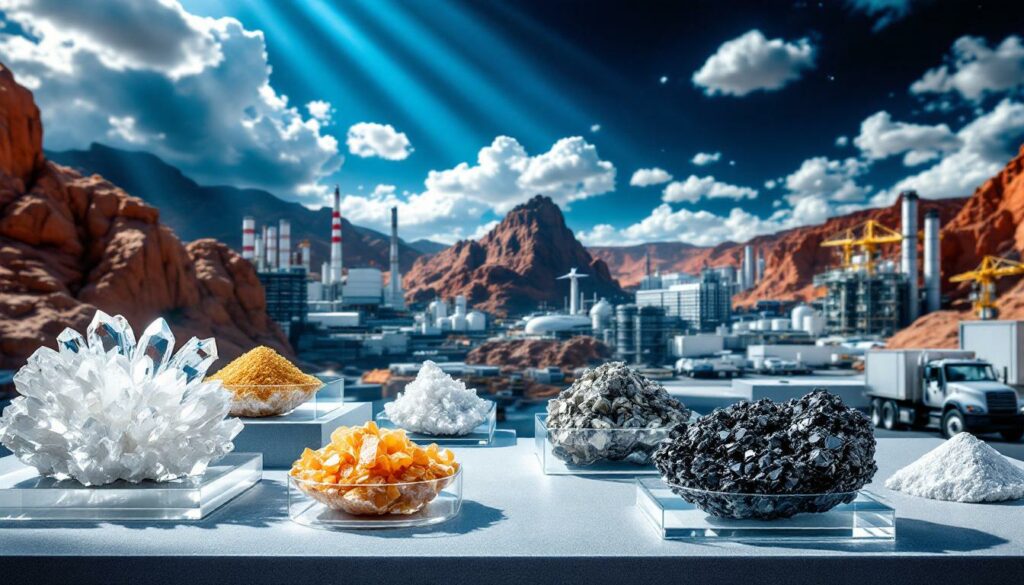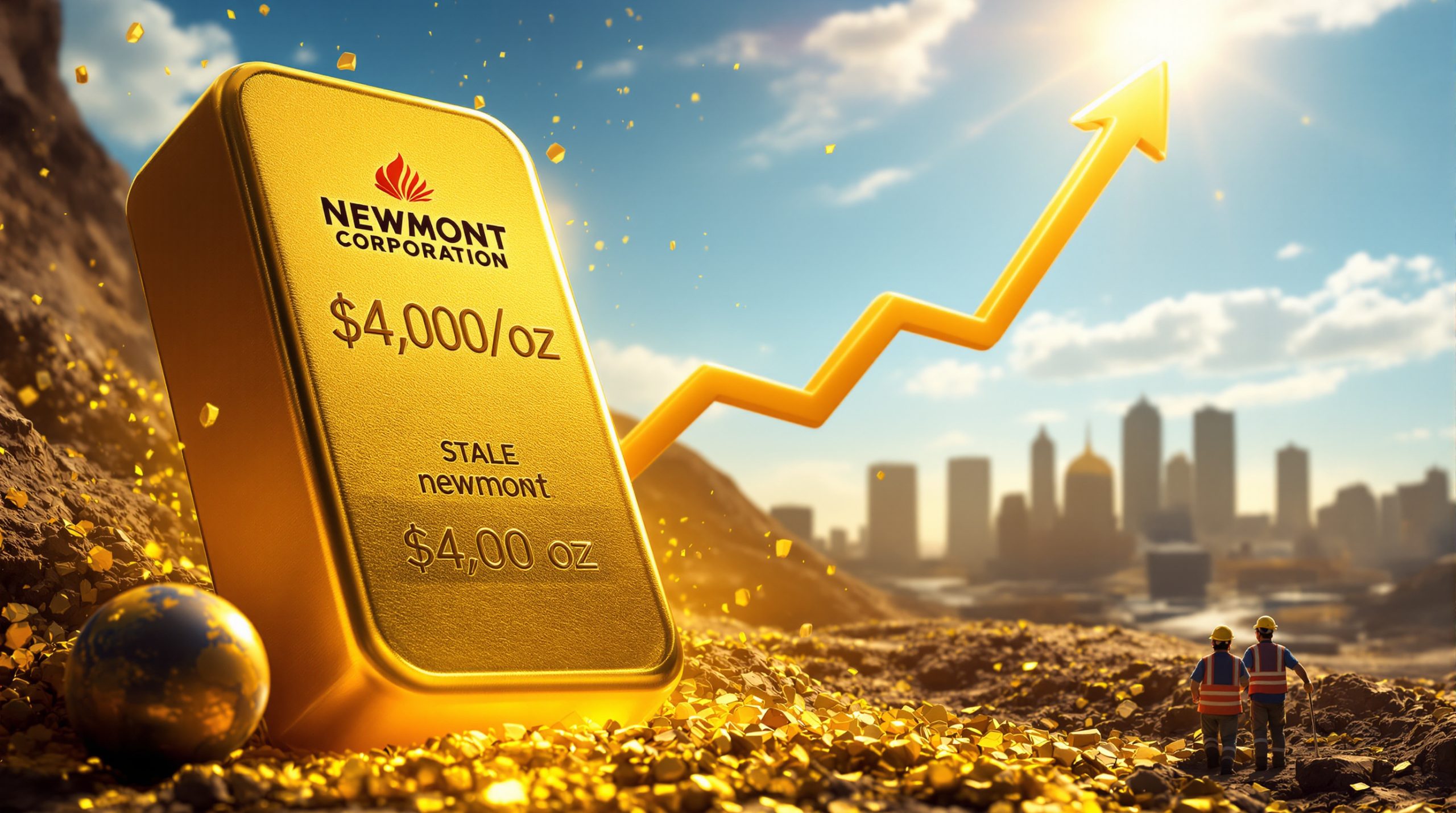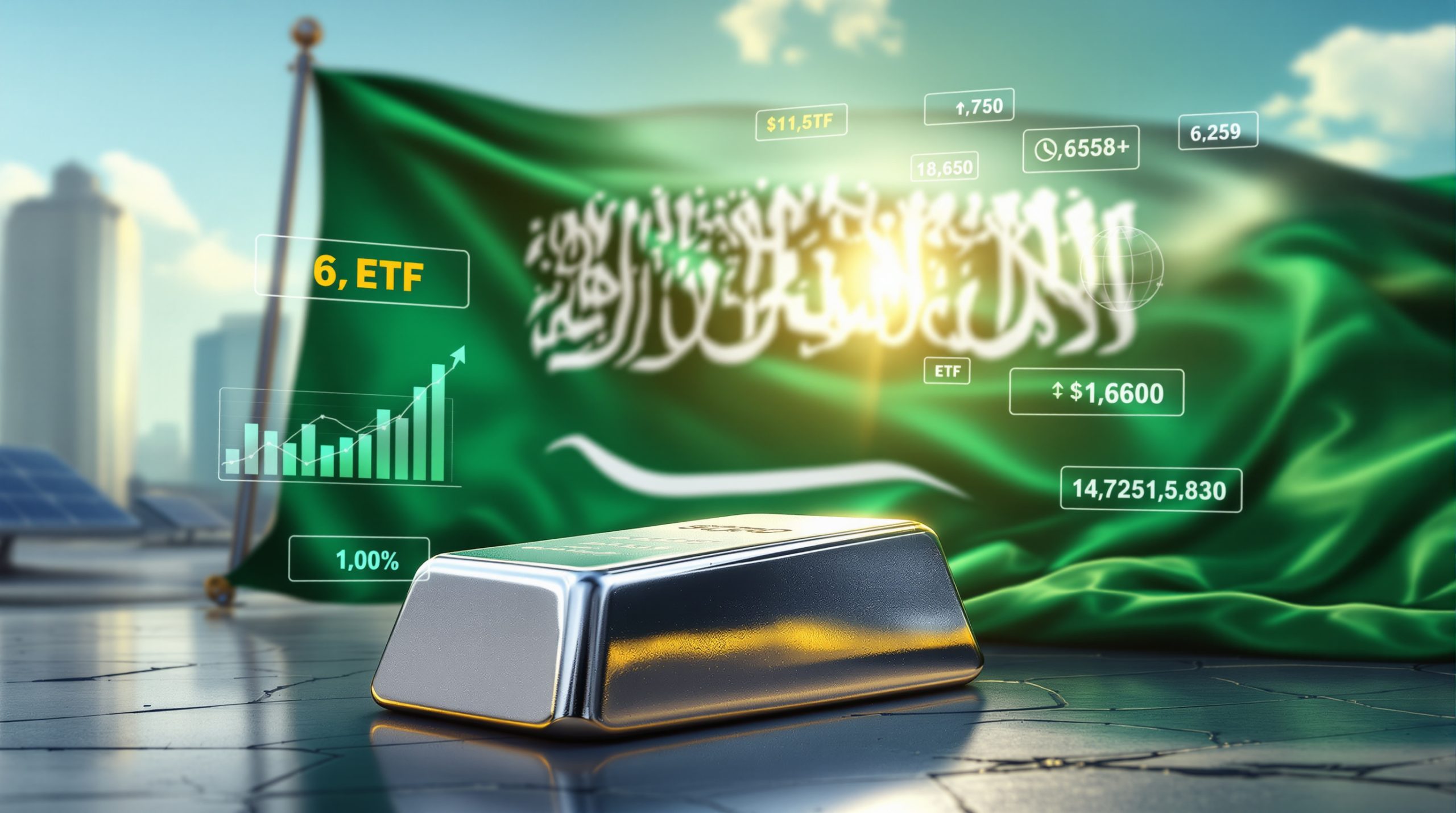Understanding Mineral Sands: Investment Opportunities in the ASX Market
Mineral sands represent one of the most strategically important yet underappreciated sectors in the global resource market. While investors often focus on base metals like copper or battery materials like lithium, mineral sands quietly underpin numerous high-value industries critical to modern life. With growing industrial applications and supply constraints emerging, ASX-listed mineral sands stocks are gaining renewed attention from savvy investors seeking exposure to these essential materials.
The global mineral sands market, currently valued at approximately $4.2 billion, is projected to grow at a compound annual growth rate (CAGR) of 6.2% through 2030, driven by expanding applications across multiple sectors and tightening supply conditions.
What Are Mineral Sands and Why Are They Important?
The Composition and Formation of Mineral Sands
Mineral sands are naturally occurring deposits containing valuable heavy minerals such as zircon, rutile, ilmenite, and other titanium-bearing materials. These deposits form through complex geological processes spanning millions of years, where weathering and erosion break down mineral-rich rocks. The resulting heavy minerals—with densities between 4-5g/cm³ compared to common silica sand at 2.6g/cm³—become concentrated through natural sorting processes.
The formation cycle begins when water transportation—primarily via rivers—carries these minerals to coastlines where they concentrate as lighter materials wash away. Ocean currents and wave action further sort these heavy minerals along ancient shorelines. Over geological timescales, these concentrated deposits accumulate along paleochannels (ancient riverbeds), coastlines, and beneath sea beds, creating economically viable mineral sand resources.
Modern mineral exploration techniques typically target deposits containing 1-5% heavy minerals, with extraction and processing technologies continuously evolving to improve recovery rates while minimizing environmental impacts.
Critical Applications Across Industries
Mineral sands serve as fundamental raw materials across numerous high-value industries, with titanium dioxide (TiO₂) accounting for approximately 60% of mineral sands value and forming the basis for 90% of industrial white pigments worldwide:
-
Zirconium: Essential in ceramics (providing opacity and durability), electronics (high-temperature capacitors), nuclear applications (fuel rod cladding due to its neutron transparency), and increasingly in medical devices
-
Titanium dioxide (from rutile and ilmenite): Critical component in paints, coatings, and pigments, providing exceptional whiteness, brightness, and UV resistance properties
-
Titanium metal: Used in aerospace (a single F-35 fighter jet contains approximately 9 tonnes of titanium components), medical implants (due to biocompatibility), and high-performance applications requiring exceptional strength-to-weight ratios
-
Industrial applications: Foundry castings, refractory linings (zircon withstands temperatures up to 2,550°C), and specialized manufacturing processes
These applications make mineral sands arguably more essential to modern industry than even widely discussed resources like copper or lithium, despite receiving less investor attention. Their critical role in everything from household products to advanced aerospace components underscores their importance in global supply chains.
Why Are Mineral Sands Stocks Gaining Momentum?
Growing Global Demand Drivers
The mineral sands sector is experiencing accelerating demand due to several converging factors:
Industrial Expansion and Urbanization
-
Rapid urbanization in developing economies is driving construction material demand, with ceramic tiles alone consuming approximately 54% of global zircon production
-
Infrastructure development projects worldwide require titanium dioxide for paints and coatings, with a typical infrastructure project using 15-20% TiO₂-based products by value
-
China and India's continued industrial growth creates sustained demand for ceramic materials, with China consuming approximately 40% of global zircon production despite domestic supply constraints
Technological Advancement Requirements
-
Electric vehicle production requires specialized magnets and lightweight components, with each EV using approximately 15kg of titanium—contributing to a 22% surge in demand since 2022
-
Aerospace applications leverage titanium's exceptional strength-to-weight ratio (45% lighter than steel with comparable strength), with commercial aerospace consumption projected to increase 8% annually through 2030
-
Electronics manufacturing depends on high-purity mineral sand derivatives for semiconductor components, capacitors, and specialized glass formulations
Supply Chain Considerations
-
Limited new discoveries of high-grade mineral sand deposits in geopolitically stable regions
-
Increasing production costs at existing operations, with average extraction costs rising 18% since 2020
-
Supply chain disruptions highlighting the importance of resource security, exemplified by Mozambique's 2023 export restrictions causing a 40% price spike in titanium dioxide
Environmental and Efficiency Factors
-
Mineral sands support the transition to greener technologies, with titanium components increasingly used in renewable energy infrastructure
-
Titanium components reduce weight in transportation applications, improving fuel efficiency and reducing carbon emissions (lifecycle analysis shows titanium components can reduce automotive emissions by 15-20% compared to steel alternatives)
-
Processing advancements have improved extraction efficiency while reducing environmental impacts, exemplified by Iluka's Cataby Mine water recycling system achieving 90% efficiency
Market Trend Factors for Mineral Sands
Construction and Manufacturing Growth
The global construction industry's expansion directly impacts mineral sands demand. Urbanization trends in developing economies create substantial requirements for ceramic tiles, sanitary ware, and other zircon-intensive products. The average new residential dwelling incorporates approximately 7kg of zircon in various applications, from tiles to bathroom fixtures.
Additionally, manufacturing sectors utilize titanium dioxide for its exceptional whitening and opacity properties in paints, plastics, and paper. TiO₂ provides the highest refractive index of any commercially available white pigment, making it indispensable in quality surface coatings and plastic formulations.
"The correlation between urban development metrics and zircon consumption remains one of the most reliable predictors of demand growth in emerging markets, with each 1% increase in urban population typically translating to a 1.3% increase in zircon consumption." – TZ Minerals International Report (2024)
Transportation and Aerospace Applications
The transportation sector increasingly relies on mineral sand derivatives:
-
Titanium's lightweight properties improve fuel efficiency in aerospace applications, with modern commercial aircraft containing 15-25% titanium components by weight
-
Electric vehicles utilize specialized magnets and lightweight structures containing mineral sand components, reducing weight while maintaining structural integrity
-
High-performance applications benefit from titanium's corrosion resistance and strength, particularly in marine environments where its resistance to saltwater corrosion provides significant maintenance advantages
The aerospace sector alone is projected to consume over 70,000 tonnes of titanium annually by 2026, representing a compound annual growth rate of 8.3% from 2023 levels.
Technological Advancements in Processing
Innovation in mineral separation and refining techniques has transformed the economics of mineral sands operations:
-
Advanced separation technologies improve recovery rates, with latest-generation spiral separators achieving 95%+ efficiency compared to 80% a decade ago
-
More efficient processing reduces environmental footprint, with dry processing techniques reducing water consumption by up to 60% compared to traditional wet processing
-
Enhanced beneficiation techniques allow processing of lower-grade deposits, expanding the economically viable resource base by approximately 15-20% over the past decade
These technological improvements enable companies to extract value from previously uneconomic deposits while simultaneously improving sustainability metrics—a win-win that enhances both profitability and ESG performance. The future of mining industry evolution will likely continue this trend.
Top ASX Mineral Sands Investment Opportunities
Iluka Resources (ASX: ILU)
Company Profile and Market Position
Iluka Resources stands as Australia's premier mineral sands producer and one of the largest globally. The company's operations span multiple continents with a strong focus on zircon and titanium dioxide production. In 2024, Iluka reported impressive financial results with:
- Revenue exceeding $1.1 billion
- EBITDA of $477 million (43.4% margin vs. industry average of 32.1%)
- Net profit of $231 million
Despite these strong figures, the company experienced year-over-year declines of 9% in revenue, 18% in EBITDA, and 33% in profit, primarily attributed to rising operational costs and market pricing pressures in specific product segments.
Key Assets and Operations
Iluka maintains four strategic operations:
-
Jacinth-Ambrosia: Major zircon mine in South Australia producing approximately 300,000 tonnes annually—representing around 25% of global supply
-
Cataby: Significant mineral sands operation in Western Australia with a 13-year mine life producing ilmenite, zircon, and rutile
-
Narngulu: Processing facility in Western Australia capable of handling 600,000 tonnes of mineral concentrates annually
-
Capel: Processing operation in Western Australia specializing in synthetic rutile production
Additionally, Iluka holds a 20% stake in Deterra Royalties, which generated $31 million in dividend income during 2024. The company has also established a $220 million rehabilitation bond for its Jacinth-Ambrosia mine closure, demonstrating its commitment to environmental responsibility.
Market Outlook
Iluka's management indicates positive demand signals for 2025, though competitive pricing pressures remain a potential challenge. The company's long-standing industry presence positions it well to navigate market fluctuations, with applications for its products expanding beyond traditional uses into emerging technologies.
With zircon prices forecast at approximately $2,800 per tonne and rutile at $1,200 per tonne for 2025 (according to TZ Minerals International), Iluka's diverse product portfolio provides revenue stability even during periods of volatility in individual mineral sand prices.
Sovereign Metals (ASX: SVM)
World-Class Rutile Resource
Sovereign Metals has distinguished itself by discovering and developing the world's largest natural rutile deposit at its Kasiya project in Malawi. This remarkable resource includes:
- Mineral Resource Estimate of 1.8 billion tonnes
- 1.01% rutile grade (equating to 18 million tonnes of rutile—sufficient to meet approximately 20 years of global demand)
- 1.32% graphite grade (equating to 24 million tonnes of graphite)
What makes this discovery particularly significant is that it represents the first rutile-dominant deposit identified in over 70 years, highlighting its exceptional rarity and strategic importance. As noted in Rio Tinto's 2023 Technical Assessment, "Malawi's Kasiya deposit rewrites exploration paradigms for rutile," suggesting potential for similar discoveries in previously overlooked regions.
Economic Potential
The preliminary feasibility study (PFS) for Kasiya demonstrates compelling economics:
- Post-tax NPV of US$1.6 billion (using an 8% discount rate and calculated using Monte Carlo simulation methods to account for variable pricing scenarios)
- Internal Rate of Return (IRR) of 28% after tax (significantly outperforming the 12-18% average for base metals projects)
- Average annual EBITDA projection of US$415 million
- Impressive EBITDA margin of 64%
- Projected 25-year mine life (with potential for extension)
- Annual production estimates of 222,000 tonnes of rutile and 244,000 tonnes of graphite
These figures position Kasiya as potentially one of the most profitable mineral sands operations globally, with particularly attractive margins due to the high-value nature of natural rutile and the deposit's favorable mining characteristics.
Strategic Partnership
Sovereign's potential has attracted major industry attention, with Rio Tinto investing $40.4 million for a 15% stake in mid-2023. This strategic partnership provides validation of the project's significance and potential access to Rio Tinto's technical expertise and market connections.
The involvement of a major player like Rio Tinto not only validates Sovereign's metallurgical testing protocols but also potentially accelerates the path to production through shared expertise in large-scale project development. The partnership represents a significant vote of confidence in both the resource quality and Sovereign's management team.
Diatreme Resources (ASX: DTR)
Silica Focus and Project Portfolio
Diatreme Resources has established a strategic position in high-purity silica sands, which complement the broader mineral sands sector. The company's key projects include:
- Northern Silica Project (Queensland)
- Galalar Silica Project (Queensland) with silica purity of 99.8% SiO₂—meeting stringent solar glass manufacturing specifications
- Cape Flattery Silica Project (Queensland)
All projects are located in resource-rich Northern Queensland, with a combined Mineral Resource of 463.7 million tonnes and Ore Reserves of 79.5 million tonnes. The high-purity nature of these resources makes them particularly valuable for photovoltaic glass production—a rapidly growing market segment as solar panel installations continue to accelerate globally.
Strategic Partnership
Diatreme has secured a valuable joint venture with Sibelco, a global industrial minerals leader. This partnership provides:
- Technical and project development expertise from one of the world's leading silica producers
- Marketing support and distribution channels through Sibelco's established global network
- Project financing assistance, reducing Diatreme's capital raising requirements
Sibelco has demonstrated its commitment by acquiring a 26.8% stake in the project for $35 million, providing significant validation of Diatreme's assets and development strategy. This partnership substantially de-risks the project development pathway and potentially accelerates time-to-market.
Why Consider Mineral Sands for Your Investment Portfolio?
Supply-Demand Dynamics
The mineral sands sector presents a compelling investment case based on fundamental supply-demand imbalances:
- Limited new discoveries of high-grade deposits, with Kasiya being the only major rutile discovery in over seven decades
- Increasing production costs at existing operations, with extraction costs rising 18% since 2020
- Growing demand across multiple industries, from traditional ceramics to cutting-edge aerospace applications
- Strategic importance in high-tech and green technology applications driving policy support in many jurisdictions
These factors create a favorable pricing environment for producers with established operations or advanced development projects, particularly those in politically stable jurisdictions with secure supply chains. Understanding mineral beneficiation insights is crucial for evaluating potential investments in this sector.
Diversification Benefits
For resource investors, mineral sands offer portfolio diversification beyond traditional mining sectors:
- Different demand drivers than precious metals, with mineral sands showing only a 0.3 correlation to iron ore prices
- Less correlation with economic cycles than base metals, as approximately 78% of mineral sands output is consumed by relatively non-cyclical industries
- Exposure to both industrial and technology growth trends, providing balanced market exposure
- ASX mineral sands stocks trade at approximately 8.2x EBITDA compared to 11.5x for lithium peers, potentially offering better value
This diversification potential makes mineral sands an attractive component of a balanced resources portfolio, potentially reducing overall volatility while maintaining exposure to critical industrial materials.
Long-Term Growth Potential
The sector's growth trajectory appears well-supported by:
- Urbanization trends in developing economies, with each 1% increase in urban population typically translating to a 1.3% increase in zircon consumption
- Technological advancements requiring specialized materials, particularly in electronics and aerospace
- Infrastructure development globally driving demand for titanium dioxide in paints and coatings
- Green technology transitions requiring advanced materials, with titanium components increasingly used in renewable energy infrastructure
These structural growth drivers suggest sustained demand expansion over the coming decades, particularly as emerging economies continue to develop and advanced manufacturing sectors expand globally. Exploring investment opportunities 2025 may reveal additional potential in this sector.
FAQ: Mineral Sands Investment Considerations
What are the primary risk factors for mineral sands investments?
Mineral sands investments face several risk considerations:
- Commodity price volatility affecting profit margins, as evidenced by Mozambique's 2023 export ban causing a 40% price spike in TiO₂
- Operational challenges in extraction and processing, particularly for companies operating in remote locations
- Regulatory and environmental compliance requirements, with rehabilitation costs forming a significant component of project economics
- Competition from alternative materials or recycling, though substitution risks remain relatively low due to the unique properties of mineral sands products
- Geopolitical risks in certain operating jurisdictions, with sovereign risk ratings varying significantly (Australia: AAA vs Malawi: B-)
Investors should carefully evaluate each company's exposure to these risk factors, with particular attention to operational jurisdiction and balance sheet strength.
How do mineral sands stocks perform during economic downturns?
Mineral sands typically demonstrate moderate cyclicality:
- Less volatile than base metals during recessions, with approximately 78% of output consumed by relatively non-cyclical industries
- Demand supported by diverse end-use applications, reducing exposure to any single economic sector
- Production constraints provide some price support even during demand slowdowns
- Companies with diverse product portfolios tend to weather downturns better than single-commodity producers
Historical performance data indicates that mineral sands stocks typically experience approximately 60-70% of the drawdown seen in base metals during recessionary periods, offering some relative defensive characteristics within the resources sector. Current [industry consolidation
Want to Catch the Next Major ASX Discovery Before Everyone Else?
Discover how to gain an edge in ASX mineral sands investing with Discovery Alert's proprietary Discovery IQ model, delivering real-time notifications of significant discoveries across all commodities. Explore historic returns from major mineral discoveries and see how early identification can transform your portfolio at https://discoveryalert.com.au/discoveries/.




